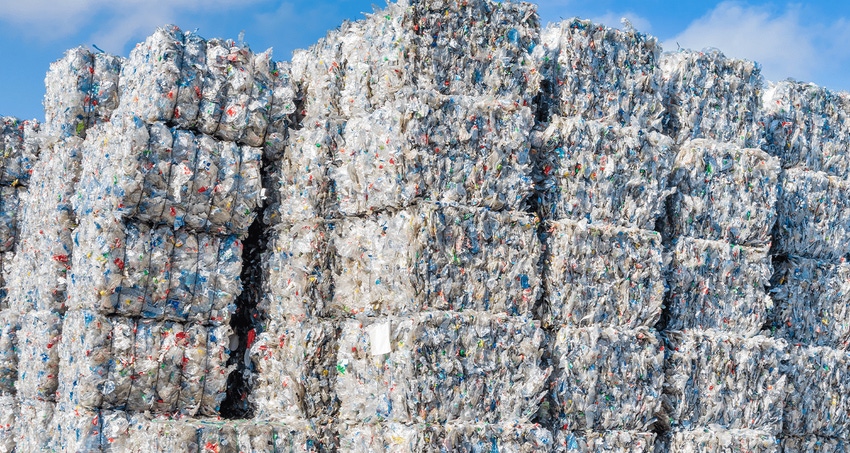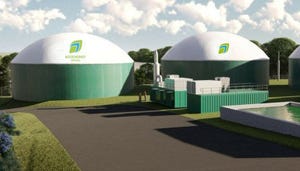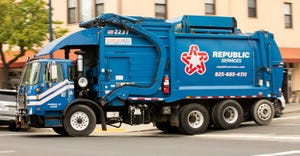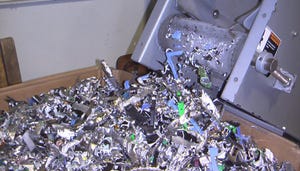Driving Recycling Rates Through Policy: Support for Advanced Recycling
One of my favorite parts about my job, and arguably the most important, is centered around technology and innovation. As the world closes in on new ways to responsibly use and reuse plastic so that it doesn’t become waste, technology and innovation are the drivers making this happen. With dedicated research and development, we have so many more options for plastics recycling than we did just 20 years ago, meaning a wider variety of plastics can become new products instead of losing these valuable feedstocks to the landfill.

One of my favorite parts about my job, and arguably the most important, is centered around technology and innovation. As the world closes in on new ways to responsibly use and reuse plastic so that it doesn’t become waste, technology and innovation are the drivers making this happen. With dedicated research and development, we have so many more options for plastics recycling than we did just 20 years ago, meaning a wider variety of plastics can become new products instead of losing these valuable feedstocks to the landfill.
I’ve spent more than 30 years following this journey as I’ve worked with industry, governments and nonprofit partners to help solve environmental challenges and build a better future for our planet. It’s these experiences that make me particularly excited about the potential for advanced recycling. This scalable process takes hard-to-recycle plastic materials and breaks them down to their chemical building blocks so they can be reformed into new plastics for applications where high-performance and high purity is critical, like food packaging.
Working across sectors, I’ve found that private action can drive rapid change, but only if there are appropriate systems to facilitate shifts in material ecosystems. To reduce waste, product designs must optimize material use, recycling systems must manage materials at the end of life, and markets must be ready to receive the recycled materials as material for new products. That means we need federal and state policy to expedite this transition towards a circular economy and support the fantastic innovations we’re developing every day to design, collect, sort, and recycle plastic waste.
Policy support is so critical because the circular economy is essential to building a more sustainable future. Now is the time, since the future looks bright for keeping more plastic from being lost to the landfill. Within just the past decade, we’ve seen circular solutions advance by leaps and bounds in the United States—a McKinsey study found advanced recycling projects could increase recycled content by up to one million metrics tons by the end of next year. When more plastic materials are recycled, that means fewer materials end up in the environment.
That’s great news for the planet, but it’s also a major opportunity for businesses. Demand for recycled plastic packaging is growing at nearly 6 percent each year. As stewards of the environment, we want to be part of this expansion in recycled plastic content. It’s the right thing to do – for people, and for the planet.
Fortunately, consumers are already on board with this vision. Even in the midst of the COVID-19 pandemic, six in 10 consumers made a conscious effort to choose sustainable packaging.
But not every plastic material currently can be recycled at the curb. For example, less than two percent of consumers have access to curbside film recycling. Polyethelyene film is a valuable material that is relatively easy to recycle, but in most locations needs to be collected separately at store drop off locations. That’s why Dow has worked to make collection of this material more convenient for consumers by helping pilot new approaches, including curbside film recycling projects with Waste Management and Hefty Renew.
Government policies can either drive an increase in recycling rates, or they can hold back the American recycling system from growing. Laws that clearly support all recycling technologies would provide regulatory certainly that can drive investment in new technologies.
In addition to reducing plastic waste, advanced recycling can also reduce the carbon footprint of plastic production. A recent study found that advanced recycling that supports plastic-to-plastic solutions can cut carbon emissions nearly in half.
Of course, there’s no silver bullet that will solve for the national recycling rate – and we need all the tools in our technology toolbox to create a fully circular system. At Dow, we’re taking a materials ecosystem approach to plastic recycling, including collaborations like our work with Valoregan that includes both mechanical and advanced recycling. We’re also tackling the specific challenge of film recycling, working with waste management leader WM to rollout new programs for curbside collection and recycling. We’re also incorporating bio-based feedstocks into our product offerings like ethylene made from corn stalks and leaves from New Energy Blue.
But if we are truly to get over the hump and design a circular system for plastics, the recycling system need policy support. One of the ways we can help offset the costs of plastic recycling is through extended producer responsibility (EPR), which as the name suggests requires those who control the packaging to help pay for recycling it. Legislation supporting this system would price in the costs to ensure these materials don’t end up in the environment.
Recycling is currently regulated by a mix of state and federal laws rooted in the mindset that recycling is an alternative form of waste disposal. Transition to a circular economy requires a shifting of this mindset to one rooted in the manufacturing process and intended end product. EPA should approach permitting decisions and other regulatory actions from a perspective of regulating the activity in the same way that similar manufacturing is regulated when they use virgin materials.
Advanced recycling legislation is another key piece of the puzzle. Both at the federal and state level, numerous bills have been proposed that could legally define advanced recycling as recycling, reducing the bureaucracy to invest in and build new facilities that can process more plastics.
We all have a part to play in prevent valuable plastics from going to waste outside the recycling system. As it turns out, one of the best ways we can do that is by encouraging policy and funding for AR to help close the recycling gap. By bringing together consumers, businesses and governments, we can create lasting changes to the recycling system that support a more sustainable world.
Jennifer Ronk is Senior Sustainability Manager at Dow.
About the Author(s)
You May Also Like


